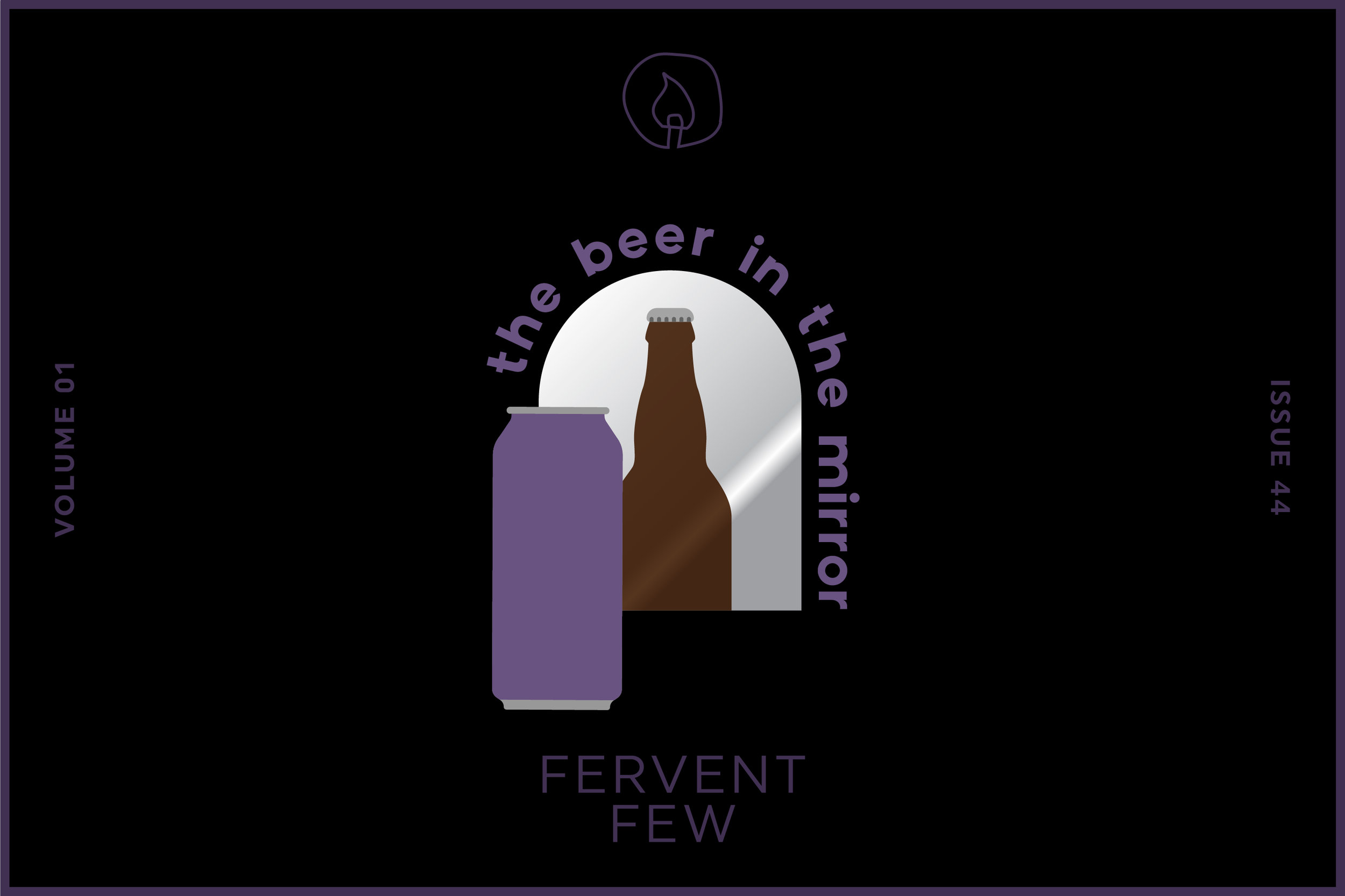Craft beer has come a long way in a relatively short time. But have you really sat down and thought about how much has changed? Remember Goses? It feels like just last week they were the hot style. This week, we asked the Fervent Few what has changed or disappeared completely since they started getting into craft beer.

Zack Rothman: “I used to drink craft beer from bottles all the time. That changed dramatically over the years as craft brewers started to put their beer in cans. Nowadays, it’s completely flipped and I drink most of my craft beer from a can. What a time to be alive.”

Rob Cartwright: “Craft used to be more of a treat. We'd go to some great beer bar like Brick Store or Porter in Atlanta and get these amazing beers that I'd never heard of before. I still love those places (and always will), but now I can find really good beer in all kinds of locations. Which is great, but when you can enjoy a great beer almost any time and anywhere it does take away from the special 'treat' aspect of things. Not complaining at all.”

Lana Svitankova: “Drinking beer without an urge to boast/share/whateveryoucallit. Just drinking without trying to check it in on social media or deconstructing it. Don't want to seem snobbish, but I really miss the times beer could surprise me so easily.”

Dan Schwalbach: “Sometimes I miss being a craft beer novice. The excitement of finding a brewery or beer that was completely different than anything else I'd had is an experience that gets harder and harder to come by these days. And when it does happen, it seems like there's a lot more to navigate with ‘craft beer enthusiasts’ to get them on board with whatever you're excited about. Of course, the tradeoff is being a more informed consumer, and that's nice too, but it's easy to get paralyzed by options when picking out what to drink these days. One of my favorite parts of my craft beer evolution was when I first started dating my wife, and on date nights we'd hit up the shop by her house and each grab a bomber of whatever looked good. I'm sure I would've found a lot of those styles down the road, but when most of the ‘specialty’ beers came in large format and I had someone to drink them with, it made it really easy to experiment.”

Mike McCarty: “I used to get a lot of variety packs because I wasn't familiar with many breweries but still wanted to try different styles/breweries. Now that I'm armed with way more info, I usually have something specific in mind when that I target when I go to the store.”

Jason Berg: “I think of growlers when I look back to my early days of craft. Those days there were not a lot of local breweries here and picking up a half-gallon at a time was the most common way to try the fresh beer. With the law signed in 2011 that allowed for pint sales at breweries in Minnesota, it changed how I tried beers. Even though a $5-7 pint is more expensive per ounce than most growler fills, it is a better quality pour and does not commit to four pints quickly to preserve carbonation and flavor. To bring to a party or have at home, I am much more likely to pick up relatively fresh cans (especially when date-stamped!) that are consumed individually and easier to pack in a cooler or fit in a fridge. Now, my growlers are displayed on top of my bookshelves as art more than function.”

Wayne Pelletier: “Twenty years ago, outside of a few local IPAs, imports made up 80% of my consumption and those were mostly Belgian and German. A decade ago, the craft game had grown a lot, adding a few Stouts/Porters, wheat, and maybe a Barleywine. To find diversity and uncover gems, I still had to look to imports for about half of my purchases. All of that has changed now. Those imports are still available and still tremendous, but the variety available locally can’t be touched. Most breweries now have barrel programs, produce wild/sour beers, fruited brews, and Stouts are little more than liquid donuts. It’s an embarrassment of riches. I would say imports are maybe 10% of my purchases these days. That will reduce even further when a Rauchbier or Pilsner pops up in my ’hood that can compare.”

Nate Wannlund: “One thing I really sought out back in the day was new brewery openings. I loved to check out new concepts and new approaches to my favorite fermented beverage. Today it's become too overwhelming to keep up with that I have stopped trying. I now will either wait for a recommendation or just stumble upon a new spot by chance. I have made peace with this feast or famine approach to new beers.”

Caldwell Bishop: “Back in the day, when I first had more flavorful beer, I lived in rural PA. At the time, I primarily only had access to cases of beer, not individual bottles. And if I was lucky, it would be some kind of variety case. Now, I have access to all kinds of packaging, including bombers, cans, six-packs, etc. I'm also finding the experience and culture around beer seems to somewhat reflect the city, for me. While money and accolades came across as more important than anything else where I previously lived, Baltimore seems to be more about people and community than various superficial status symbols.”

Tyler W. Plourd: “I think the public's reception to new breweries is wearing down. Here in Connecticut, there is still a lot of room to grow in terms of sheer number of breweries (we currently have 65 operating breweries/pubs with a dozen more or so due to open by 2019) and a lot of folks are really into trying them all, myself included. Having been to all but three in the state, I found myself getting very burnt out by similar concepts and general redundancy, leading me to pick and choose when and who to visit now. New openings still bring in eager drinkers by the hundreds, but the fervor is certainly more tame than when my journey began.”

Bobby Fitzgerald: “I think for the most part, the time for being a new craft beer drinker is much better than it was two decades ago. There is a ton more attention to service, education, and small/local breweries have upped the game in order to compete in a growing industry. However, I do miss seeing some of the European beers that drew me into what was happening around the world. There are still quite a few American breweries making Belgian beers that miss the mark of old standard offerings like Westmalle Tripel, St. Bernardus, Tripel Karmeliet, Rochefort, Maredsous, Orval, and generally any Saison from there. The same goes for some Czech Pils, Schneider Weisse, and Samuel Smith. These are still great beers that reminded me of being in Europe in the late ‘90s, and many young drinkers have neglected to experience parts of the tasting arc that long-time drinkers have experienced. Now taplists are inundated with IPA (hazy and otherwise) and though I love hoppy beer, keeping people informed of standard bearers would always be a worthy goal in my opinion. It is not their fault, however, as the latest thing to chase is often dictated by beer buyers and retailers.”

William Weber: “Trading. When I first got into craft beer as a hobby, there were only a handful of breweries in the state and out-of-state distribution was limited as well. For a couple years, I traded through the BeerAdvocate forum several times a month. Nowadays there’s such a wealth of great, fresh local beer available that I feel no urge to negotiate and ship cross-country to strangers.”

Are you new to craft beer? Have you been sipping sours for years now? What’s changed since you started getting into beer? Join the Fervent Few and let's talk about it!










